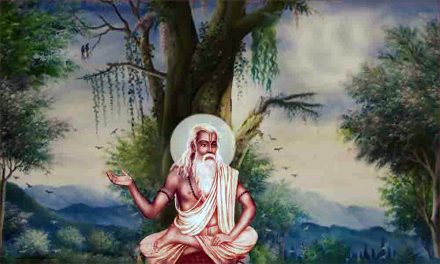The fifth ceremony after Jatkarma ceremony is called naming ceremony. In this ceremony the child is given a name. All the activities in the world are carried on the basis of name. Every parent has the duty to give a nice name to the child, which reminds the child of some goal or objective in the life. It is very important to select a nice name for the child; the name should be meaningful which fulfills all the desires of the child. Whenever the child hears the name he will remember the meaning and purpose hidden in it and will be inspired by its meaning.
Generally it is seen that few people keep meaningless names for their children. For example Gangaram, Totaram, Jamunadas, Chediram etc, which are meaningless. If the name is meaningless how can it be inspirational for the child? In the same way the child having the names of birds and animals cannot have a strong feeling within.
There are two purposes of naming the child – the first is that the name is used to address the child, and the second is that the name should raise good feelings inside the person, which reminds him of his goal. For example – Virsen denotes victory in the war, Vedvrata means a person who takes the resolution to study the Vedas. Satyavrata means one who follows truth. Such names arouse some positive feelings. Such names should not be kept which have negative role in history, for instance – Duryodhan, Shakuni, Jaychand etc. These names does not give high feeling in the child.
Names like Yudhishtir, Vishvamitra are related to high feelings. The person rises above in life with these names. This is found only in Vedic culture. Others keep meaningless names. Naming a child is very important and through this we keep a goal in front of the child.
It should be remembered that the name should be such which can be pronounced easily. For example, Pratap, people generally tend to say Partap, Brahmanand is called Barmanand, and Shraddhanand is called Shardhanand. Therefore while naming the child this point should be taken care off and also should be seen that the beginning and middle letters are not together else they are always misspell.
The classical books say that the names should not begin with Ka, Kha, Cha and Chha. But the names of ancient sages contained these letters in the beginning. For example – Kapil, Charak, Parashurama, Pulast, Kutsa. These names were very popular in the Indian history but these names are contrary to the said principle. The simplest rule in this case is that the names should be simple, meaningful, easy to pronounce and reminding the goals, the other principles are secondary.
The boy’s name should contain even letters (2,4,6,8) and girls should contain odd letters (3, 5, 7). The name should have two or four letters. Two-letter name for a boy gives fame and four-letter name gives divine knowledge. For example – Atri, Bhrugu are two letter words, Atridev, Satakam are four letter words. When we look at the names used in the ancient times we can see that the above-mentioned rule was not followed. For example the names of men like Kapila, Gharak, Janak, Jivak, Lakshman, Bharat, Shatrughna, Arjun were three letter names. Similarly the names of women like Sita, Gargi were two letter names. The main principle is that the name should be small, easy to pronounce and sweet.
‘Sanskar Vidhi’ mentions about naming ceremony that the day and star of the child’s birth, the same day and star should be chanted and 4 offerings should be given to the lord of that day and star. In other words, one offering in the name of day, one for lord, one for star and one for the lord of the star.
The naming ceremony should be done on the 11th day after counting 10 days from the date of birth of the child. Else it can be done on the 101 day or on the first birthday.












